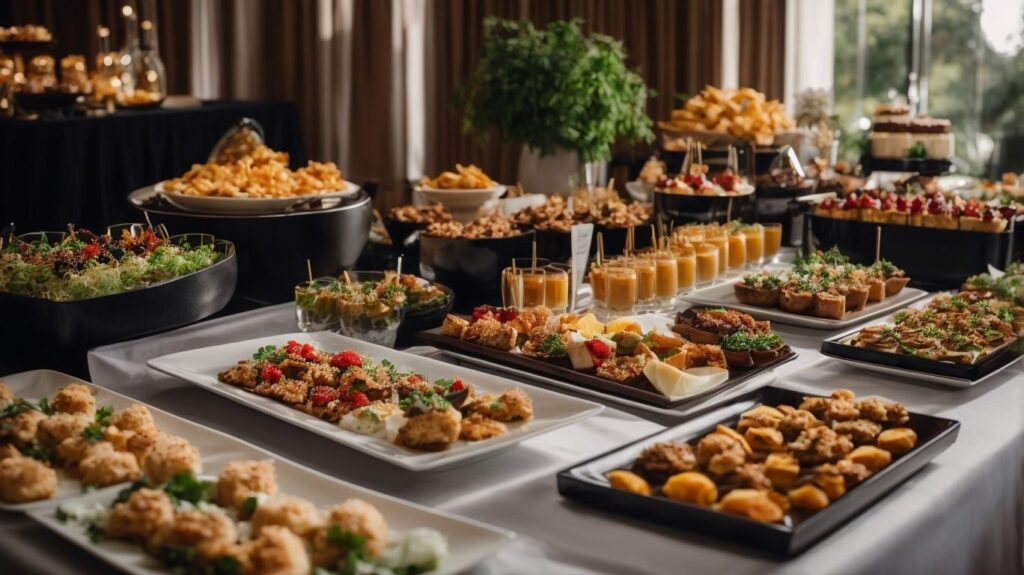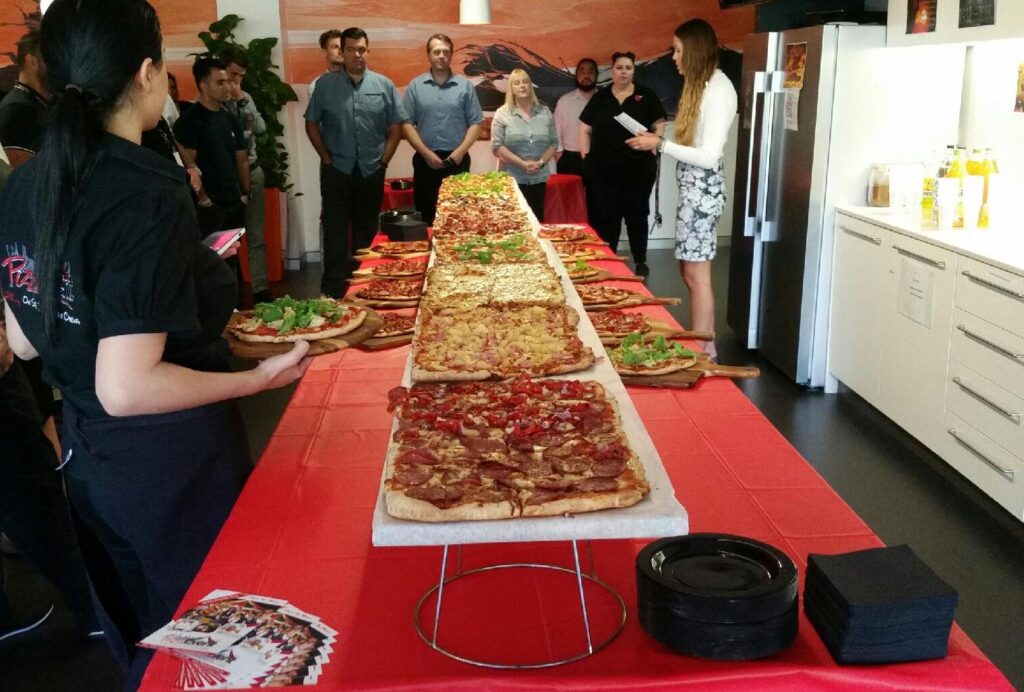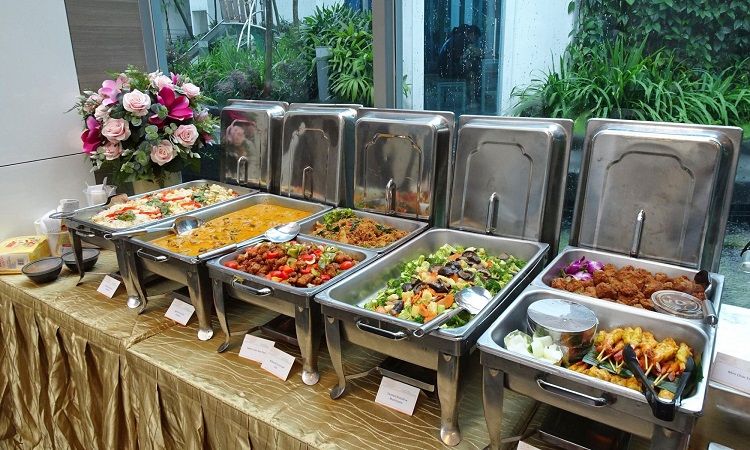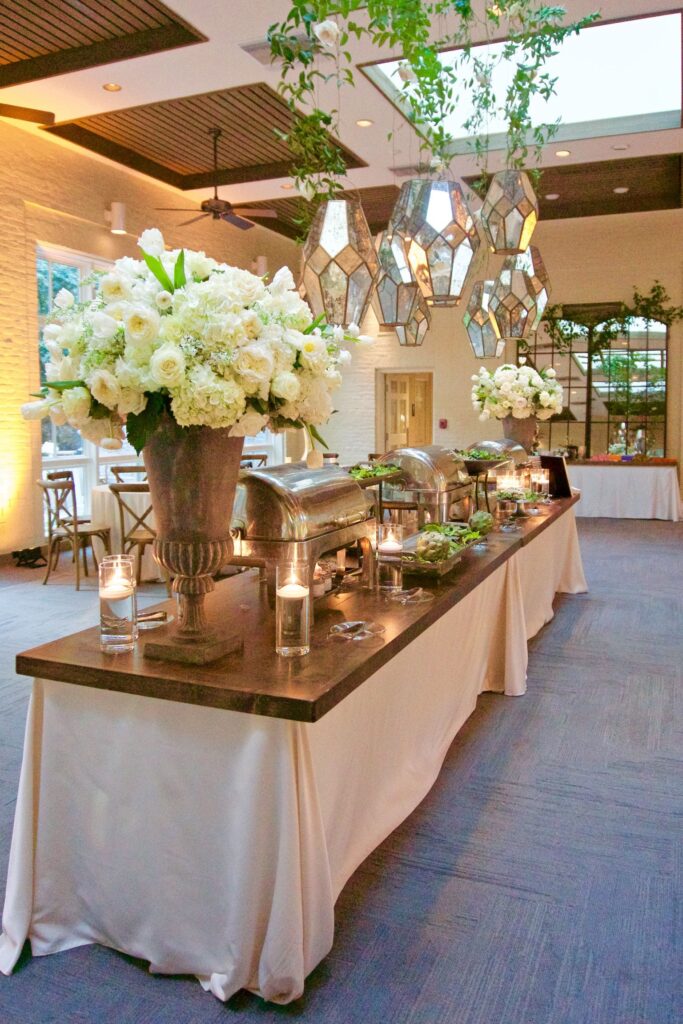Catering an office event can be a fantastic way to boost morale, foster team spirit, and impress clients. Whether it’s a corporate lunch, team-building event, or holiday party, here are some tips to ensure your office catering is a success.

1. Understand the Event’s Purpose
Before you start planning, it’s essential to understand the event’s purpose. Is it a casual team lunch, a formal client meeting, or a celebratory event? Knowing the nature of the event will help you choose the right menu, setup, and atmosphere.
2. Know Your Audience
Consider the dietary preferences and restrictions of your attendees. Send out a quick survey or ask around to gather information on any allergies, vegetarian or vegan preferences, and other special dietary needs. This will ensure that everyone has something they can enjoy.

3. Plan a Varied Menu
A varied menu caters to different tastes and keeps the meal interesting. Here are some ideas:
- Appetizers: Offer a mix of hot and cold appetizers such as bruschetta, cheese platters, and mini quiches.
- Main Courses: Include options like grilled chicken, pasta, and vegetarian dishes. Consider incorporating international cuisine for variety.
- Sides: Provide a selection of sides, such as salads, roasted vegetables, and grains.
- Desserts: Offer an assortment of desserts like cookies, brownies, and fruit platters.
- Beverages: Ensure a range of beverages, including water, soft drinks, coffee, tea, and perhaps a selection of wines or beers if appropriate.

4. Consider the Timing
The timing of your event can influence your menu choices. For morning events, consider breakfast items like pastries, fruit, and coffee. For lunchtime events, sandwiches, salads, and light entrees work well. For evening events, a more substantial meal or a buffet might be appropriate.
5. Presentation Matters
Presentation can elevate the dining experience. Work with your caterer to ensure the food is presented in an appealing way. Use stylish serving ware, attractive garnishes, and consider the layout of the food stations or buffet.
6. Set Up for Convenience
Make sure the setup is convenient for your guests. Arrange food stations or buffets in a way that minimizes crowding and allows for easy access. Provide ample seating and standing space, and ensure there are enough tables for guests to sit and eat comfortably.

7. Incorporate Healthy Options
Including healthy options is always a good idea, especially for an office setting. Offer salads, grilled vegetables, lean proteins, and whole grain options. This caters to health-conscious attendees and provides a balanced meal.
8. Communicate with Your Caterer
Maintain clear communication with your caterer. Discuss your expectations, the event timeline, and any specific requirements. A good caterer will be flexible and able to accommodate last-minute changes or special requests.
9. Provide Adequate Supplies
Ensure you have all the necessary supplies, such as plates, cutlery, napkins, and cups. If you’re serving coffee or tea, don’t forget the sugar, cream, and stirrers. Make sure there are plenty of trash bins and recycling containers available.
10. Plan for Clean-Up

Make arrangements for clean-up after the event. If your caterer doesn’t provide this service, consider hiring extra help or delegating the task to a team. A clean and tidy office space post-event is crucial.
11. Gather Feedback
After the event, gather feedback from attendees. This will help you understand what worked well and what could be improved for future events. Use this feedback to refine your catering approach and make each event better than the last.

12. Enjoy the Event
Finally, remember to enjoy the event. Office catering is an opportunity to bring people together, celebrate successes, and foster a positive work environment. Take the time to mingle, enjoy the food, and appreciate the occasion.
By following these office catering tips, you can create a successful and enjoyable event that leaves a lasting impression on your colleagues and clients.

